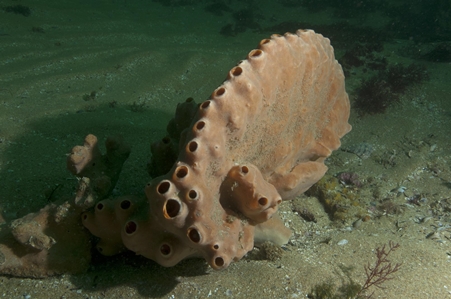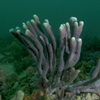General Description
A pale yellow, orange to brown sponge species, lobate to flabelliform. Size of about 50 cm.
Biology
Sponges in this genus group often incorporate large amounts of sand and broken spicule fragments into their skeletons, which have been drawn in with the incurrent of seawater.
Habitat
Reef and jetty areas, at depths of 1-100 m.
Sponge gardens
Reefs
Distribution guide
New Zealand and Victoria.
Species Group
Depth
Shallow (1-30 m)
Deep ( > 30 m)
Water Column
Max Size
50 cm
Diet
Plankton or particles
Commercial Species
No
Global Dispersal
Native to Australia
Identify
Conservation Status
- DSE Advisory List : Not listed
- EPBC Act 1999 : Not listed
- IUCN Red List : Not listed





